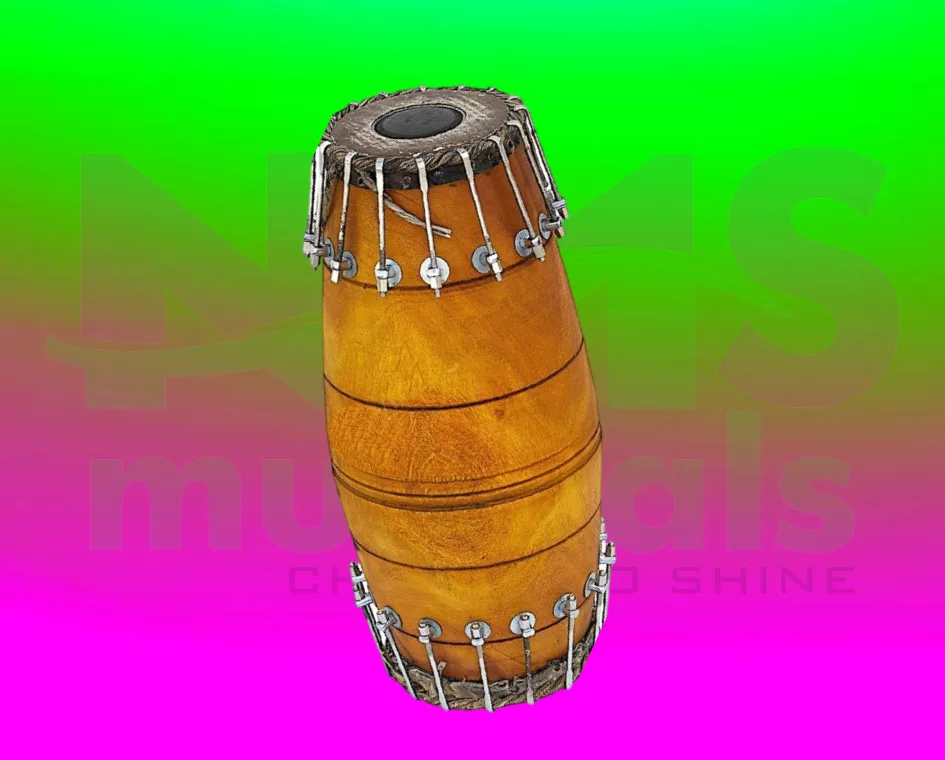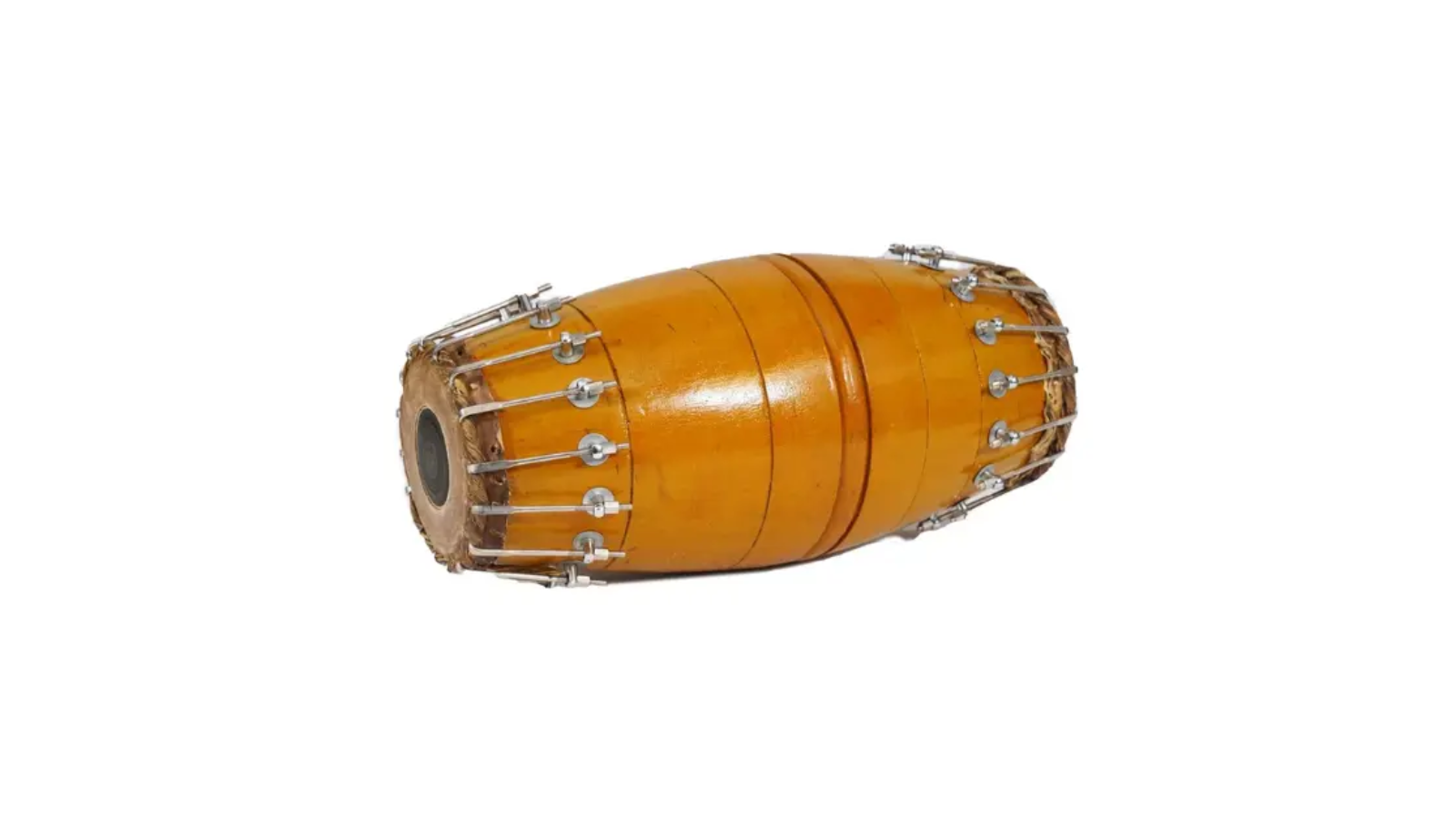A Complete Beginner’s Guide to Understanding the Basics of the Mridangam and How to Play It with Confidence

The Mridangam is one of the most revered percussion instruments in Indian classical music, particularly in the Carnatic tradition. With its deep cultural roots and rhythmic complexity, it forms the backbone of many classical music ensembles. If you’re a music enthusiast or a beginner intrigued by Indian classical instruments, understanding the basics of the Mridangam and how to play it can be a rewarding journey. This blog will provide a comprehensive introduction to the Mridangam, including its structure, playing techniques, and essential beginner tips to get you started.
1. What Is the Mridangam?
The Mridangam is a double-headed drum traditionally made from jackfruit wood, with two drum heads stretched over the shell. It is played using fingers and palms to produce intricate rhythmic patterns known as “talas.” The right head (valantalai) produces treble sounds, while the left head (idantalai) provides bass tones. Together, they create a rich and dynamic rhythmic soundscape.
2. Historical and Cultural Significance
The Mridangam has been mentioned in ancient scriptures and sculptures, symbolizing rhythm in Hindu mythology. It has historically been associated with temple rituals and is an integral part of Carnatic concerts. Legends like Palghat Mani Iyer and Umayalpuram K. Sivaraman have elevated the status of the Mridangam with their mastery, inspiring countless new learners across generations.
3. Anatomy of the Mridangam
Understanding the construction of the Mridangam is essential for any beginner:
- Shell (Body): Usually carved from a single block of jackfruit wood, known for its durability and sound resonance.
- Valantalai (Right Head): Made of multiple layers of skin with a black patch (satham or karanai) at the center that fine-tunes the sound.
- Idantalai (Left Head): Slightly larger and produces bass; layered similarly without a central black spot.
- Straps and Tuning Blocks: Leather straps are used to stretch and tune the drum, supported by tuning blocks inserted between the straps.
4. Why Learn the Mridangam?
There are several reasons to start learning the Mridangam:
- Enhances rhythm and timing skills
- Complements vocal and instrumental music
- Deepens understanding of Indian music theory
- Builds concentration and discipline
- Connects you to an ancient musical tradition
5. Basic Posture and Hand Position
Before playing, you must learn how to sit and place the Mridangam:
- Sit cross-legged on the floor
- Place the Mridangam horizontally across your legs
- The treble head should be on your right (if you’re right-handed)
- Keep your back straight and hands relaxed
Hand positions vary depending on the strokes. Your right hand should be flexible with finger taps and rolls, while your left hand delivers deeper bass strokes using a more open palm motion.
6. Introduction to Talas (Rhythmic Cycles)
Talas are rhythmic cycles forming the foundation of Mridangam playing. Some of the common talas for beginners include:
- Adi Tala (8 beats)
- Rupaka Tala (3 beats)
- Jhampa Tala (10 beats)
Each tala is broken into angas (parts), and learners are trained to count and recite solkattu (spoken syllables) to understand the rhythmic structure before playing.
7. Solkattu – The Language of Rhythm
Solkattu is a system of vocal percussion that uses syllables like tha, dhi, thom, nam, and ki to represent different strokes. Before playing on the drum, students are taught to chant solkattu patterns to build a mental map of the rhythm. This method helps in internalizing the structure and preparing for improvisation.
8. Basic Strokes and Patterns

Here are a few beginner-level strokes:
- Tha: Played on the right head using the index and middle fingers
- Dhi: Played on the left head using the full palm
- Thom: Resonant bass stroke on the left head
- Nam: Sharp stroke using the edge of the right head
Beginners practice these strokes in combinations to create simple rhythmic exercises called sarvalaghu (free-flowing rhythm patterns).
9. Learning with a Guru or Online Classes
Traditionally, Mridangam is taught through the guru-shishya parampara (teacher-disciple tradition). However, modern platforms also offer quality online tutorials and structured lessons. Choosing the right teacher who can explain both theory and technique is crucial. Repetition, patience, and consistent practice are essential for improvement.
10. Common Mistakes Beginners Make
Here are some pitfalls new learners should avoid:
- Incorrect hand posture leading to injury or poor sound
- Skipping solkattu practice
- Not tuning the drum properly
- Rushing into complex talas without mastering the basics
- Neglecting practice consistency
Awareness of these mistakes helps learners develop correct techniques and progress steadily.
11. Daily Practice Routine
A good daily routine includes:
- 5–10 minutes of solkattu recitation
- 10–15 minutes of single-stroke exercises
- 15–20 minutes of tala-based patterns
- Regular listening to Mridangam solos and Carnatic concerts
Gradually increase practice duration and complexity as your muscle memory and rhythm sense develop.
12. Tuning and Maintenance
Tuning is done by adjusting the leather straps using a stone or hammer. Beginners should seek guidance from their teacher before attempting this alone. Regular maintenance involves:
- Keeping the drum away from moisture
- Covering it with a cloth when not in use
- Avoiding direct sunlight or extreme heat
Proper care extends the life of the instrument and ensures consistent sound quality.
13. Understanding Mridangam Notation
Mridangam compositions are often written in syllabic notation. Learning to read and write these can help in remembering lessons, composing new patterns, and collaborating with other musicians. As you advance, you’ll start to understand complex compositions called korvais and mohra that conclude rhythmic solos.
14. Role of Mridangam in Ensemble Performance
In Carnatic music, the Mridangam is not just a timekeeper—it is a co-performer. It:
- Highlights the structure of kritis (songs)
- Complements the mood of the raga
- Engages in tani avartanam (solo performance) showcasing the artist’s skill
Learning how to listen and respond to other musicians is vital for ensemble play.
15. Recommended Resources for Beginners
Books, websites, and channels to explore:
- “Mridangam for Beginners” by Karaikudi R. Mani
- YouTube channels like Acharyanet, IndianRaga
- Online classes on platforms like Shankar Mahadevan Academy
- Concerts and recordings by Palghat Mani Iyer, Trichy Sankaran
These resources offer theoretical knowledge, live demonstrations, and practice tips.
Conclusion
Understanding the basics of the Mridangam and how to play it is more than just a musical endeavor—it’s a journey into rhythm, discipline, and tradition. As a beginner, you’re not only learning how to strike a drum, but how to feel and express rhythm through your hands, mind, and spirit. The Mridangam teaches you patience, focus, and a deep appreciation for Indian classical music. With dedication and the right guidance, anyone can learn to play this majestic instrument and be part of a legacy that dates back centuries. So grab your Mridangam, sit down, and let your rhythm speak.
At NMS Musicals, we offer a comprehensive range of musical instruments, including percussion, string, wind, and keyboard instruments. Our services encompass sales, expert servicing, and the manufacture of leather instruments. Explore our diverse collection and find the perfect instrument to suit your musical needs.
Visit our website to browse our offerings: nmsmusicals.in
For a closer look at our products, check out our shop page: nmsmusicals.in/shop
Stay connected with us through our social media channels:
- Facebook: https://www.facebook.com/nmsmusicalinstruments/
- Instagram: https://www.instagram.com/nmsmusicals/?hl=en
- YouTube: youtube.com/@nmsmusicals
Our shop locations are:
- Puducherry: 149, Perumal Koil Street, Heritage Town, Puducherry, 605001.
Map Link: https://maps.app.goo.gl/ejDwBBFEJmd3szxk7 - Chennai: No: 1, 1st Floor, Kandigai Street, TVS Nagar, Korattur, Chennai – 600076.
Map Link: https://maps.app.goo.gl/7oXmB6X7KQsqeuuw9
For inquiries, contact/Whatsapp us at 9500663895 or email us at laxman.m89@gmail.com.
Discover the world of musical instruments with NMS Musicals today!
For a visual overview of our percussion instruments, watch the following video:


 Cart is empty
Cart is empty 
Leave A Comment
You must be logged in to post a comment